Why Texas seceded from the Union: “It’s very common for Texans to say that the state seceded because of state’s rights. If you read the declaration that the Texas Secession Convention adopted explaining Texas’s reasons for seceding from the Union, they get to states’ rights well after they have talked extensively about protecting the institution of slavery. Texas had, in terms of percentages, roughly the same amount of slaveholders and the same percentage of slaves in its total population that Virginia had, between 25-30% of families in Texas owned slaves and slaves were nearly one-third of the population of this state, nearly 200,000 slaves in this state by 1860. Those percentages are very comparable to Virginia and no one would say that Virginia wasn’t a southern state in which slavery was very important. So Texas seceded because Texans saw the election of Abraham Lincoln with his position, which was against the spread of slavery, they saw that as a threat to the institution of slavery that they were not willing to accept, so they seceded for that reason.” (Dr. Randolph Campbell, University of North Texas)
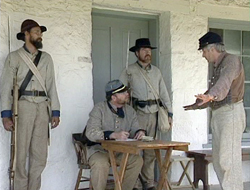
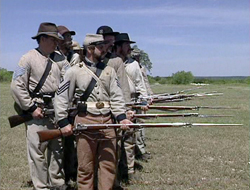
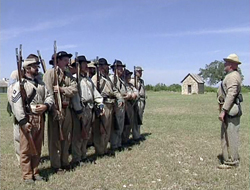
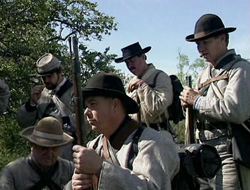
Regarding the military draft in Texas: “The way the draft, or military conscription operated in Texas, an individual who had a certain number of slaves was exempt from military service and therefore the burden fell on those who were slaveless, or those who had a minimal amount of slaves, to be drafted. Furthermore, if one could afford it, one could purchase a substitute so that he would not have to serve, which led to the complaint, ‘a rich man’s war and a poor man’s fight.’” (Professor Charles Spurlin, Victoria College)
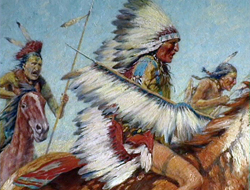
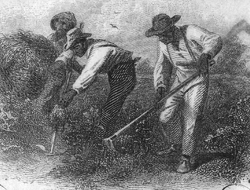
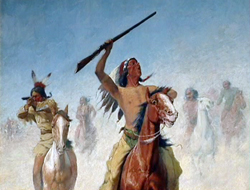
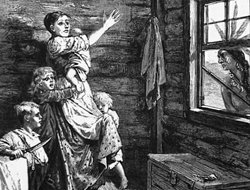
Wartime frontier defense: As the war progressed the threat of attacks on Texas’s frontier by Comanches and Kiowa Indians greatly increased. As soon as the federal troops pulled out of Texas in 1861, these tribes quickly stepped up their raids on frontier settlements across the state. All over Texas, cries went up asking for adequate protection against Native American depredations. The Governor and Legislature responded by passing legislation providing for the protection of Texas’s frontier counties. Keeping an eye on Texas settlements along the border and the frontier had been a daunting task for even the federal army. Now fielding what was in comparison a skeleton force, the Confederates were not able to deter Indian incursions. Eventually about 1,000 men were in the frontier regiments. Ranger patrols consisted of five men and an officer, who rode between their camp and the next Ranger camp to the south at two-day intervals, patrolling their way across vast sections of Texas. In some isolated frontier communities, families “forted up” against the Indians, using abandoned military posts or building stockades for protection. Out here, the phrase “safety in numbers” was a reality.
The role of women on the home front: With many of the fathers, brothers, husbands, and sons gone off to war, the women left behind on the farms and plantations had much to do: Care for their children, supervise their slaves if they had them, plant and harvest crops, care for livestock and butcher hogs, trade and sell produce and crops, pay taxes, make clothes, keep a garden, as well as care for relatives and neighbors during childbirth and sickness. Women responded to wartime needs with a spirit of enterprise. Some women visited hospitals to care for the wounded and created ladies aid societies to help soldiers and their families get food, clothing, and housing. During the war, the women played a major role; they were the backbone of the home front.
The role of Texas slaves during the war: Much of the physical work done in Texas during the Civil War was carried out by African-American slaves. Whether on the farm or the plantation, these bondsmen were responsible for producing foodstuffs and other critical cash crops such as cotton. These products were vital to both Texas and the Confederacy.
Watch a sample video clip from our documentary
The Home Front: Life in Texas During the Civil War
“Most slaves in Texas knew full well that the war was going on and most of them knew exactly what the war meant and most of them knew exactly what they wanted, they wanted the United States to win because they knew it would mean freedom. Slaves would slip up to the house at night and listed to their owners talking about the war. In church sometimes the minister would ask the slaves how many among them wanted the South to win. Of course, all the slaves raised their hands, but they sure didn’t want the South to win. On the other hand, the slaves weren’t in a position to do anything to help win their freedom.
There were fewer than 100 slaves out of the 200,000 slaves in Texas who had a chance to fight in the Union Army. Texas had many controls to keep the slaves in slavery, so they had no way to help. What most Texas slaves did do during the war was continue to work the way they always had, so they produced food and fiber, they helped the Confederacy, it wasn’t that they intended to help the Confederacy, it was essentially that they had no choice.” (Dr. Randolph Campbell, University of North Texas)
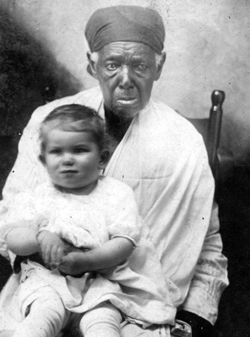
Blockade running during the war: During the war, Texas supplied many much-needed items to the Confederacy, items such as beef, leather, shoes, cotton, cloth, gunpowder, and percussion caps. Getting these products to market and to other sister states in the Confederacy became increasingly difficult as the federal blockade choked off shipping along the Texas Gulf Coast. The blockade hampered the sale of Texas products, including cotton, which was an important overseas crop. Cotton was in much demand in Europe and Texas could sell most of what it produced. Getting the bales of cotton to ports in England and elsewhere became a very risky venture. As more federal ships appeared outside Texas ports, the only way to ship these Texas goods was by blockade runner. These fast, low-slung ships commanded by daring captains would slip in and out of Texas ports, often at night. The risks were high, many blockade runners ended up on shoals and sandbars.
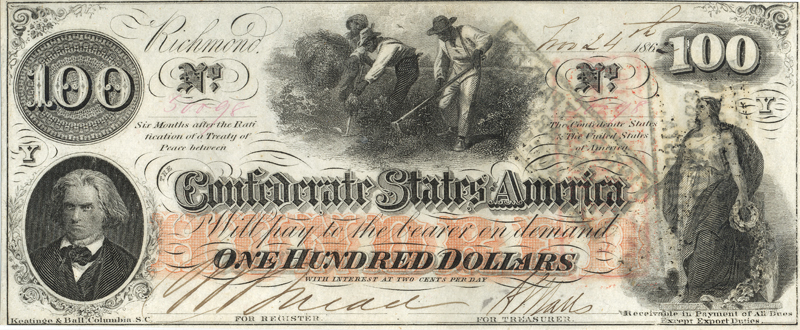
Depreciation of Confederate currency: “The Civil War brought chaos to finance and currency in the State of Texas. The Confederate government didn’t really have the resources to finance the war, so they paid for the war in a variety of ways, one of which was to print paper money. Now this paper money was not redeemable in hard currency, it had very few resources backing it and it poured off the presses. So Confederate currency depreciated. From 1862 to 1863, Confederate money lost three-quarters of its value in Texas. Obviously, this was very disruptive.
To make matters worse, in some places in Texas, the counties would issue their own paper money, paper script. So there was tremendous disruption of commerce and all sorts of business exchange due to depreciation of all this currency. When store owners refused, as some did, to take this paper money it wasn’t uncommon for local Confederate patriots to hold a meeting and make a point very clearly that you had better take Confederate money or county script or you would be in trouble. By 1864, it took $50 Confederate dollars to equal the purchasing power of $1 in 1861.” (Dr. Randolph Campbell, University of North Texas)
